By Dan and Lisa Goy the January 2018 Edition
February 23-24, 2016 (Days 48-49)
Today now passed the halfway mark of our 90-Day Mexican Adventure, we departed San Cristóbal de las Casas and headed off to Puerto Arista on the Pacific Ocean, still in Chiapas, with Bruce and Marian in the lead. Hwy 190 was our route dropping from 7000’ (2500 m) to sea level. It was surprising that we did most of the decent in a 50 km (30 miles) stretch. Our tempera-ture also changed drastically; shortly before departure we were sitting at about 7c (45F), 3 hours later when we arrived in Puerto Arista it was 38C (100F) and very humid. Hwy 190 was a great road and an easy drive notwithstanding a few assertive Mexican drivers who pass no matter how many signs or double solid lines tell them not to do this.
Our destination was José’s Camping Cabañas. It turns out Jose is Joel from Ottawa who has been in Mexico for 41 years. This place probably had the best washrooms and showers in Mexico and the campground is reasonably priced at $200 pesos per night. Lots of birds were in the lagoon out back such as storks and herons, plus crocodiles which Bruce and Marian got up close and personal with after dark.
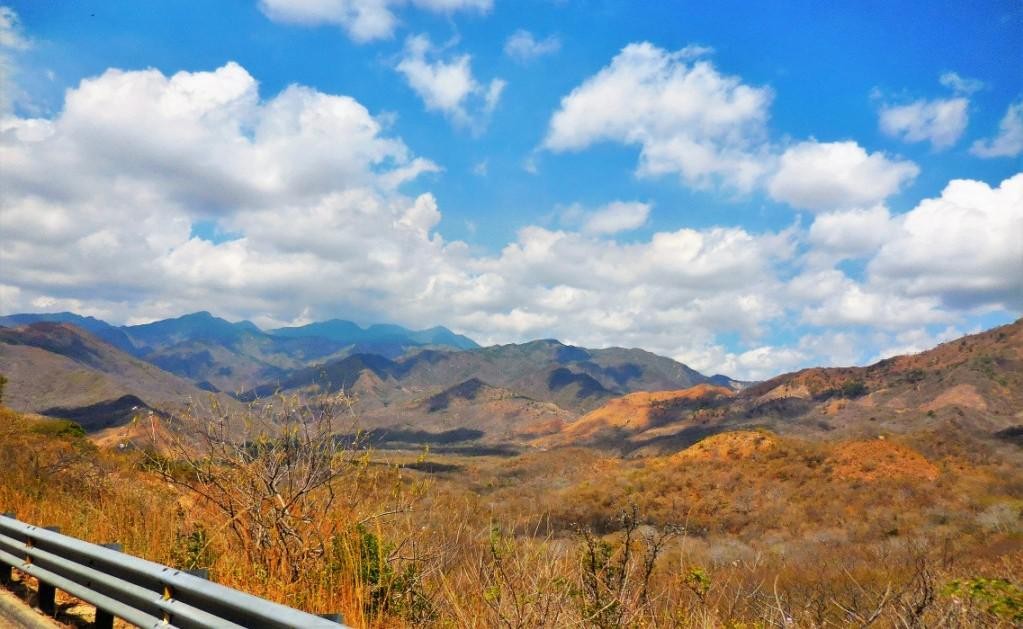
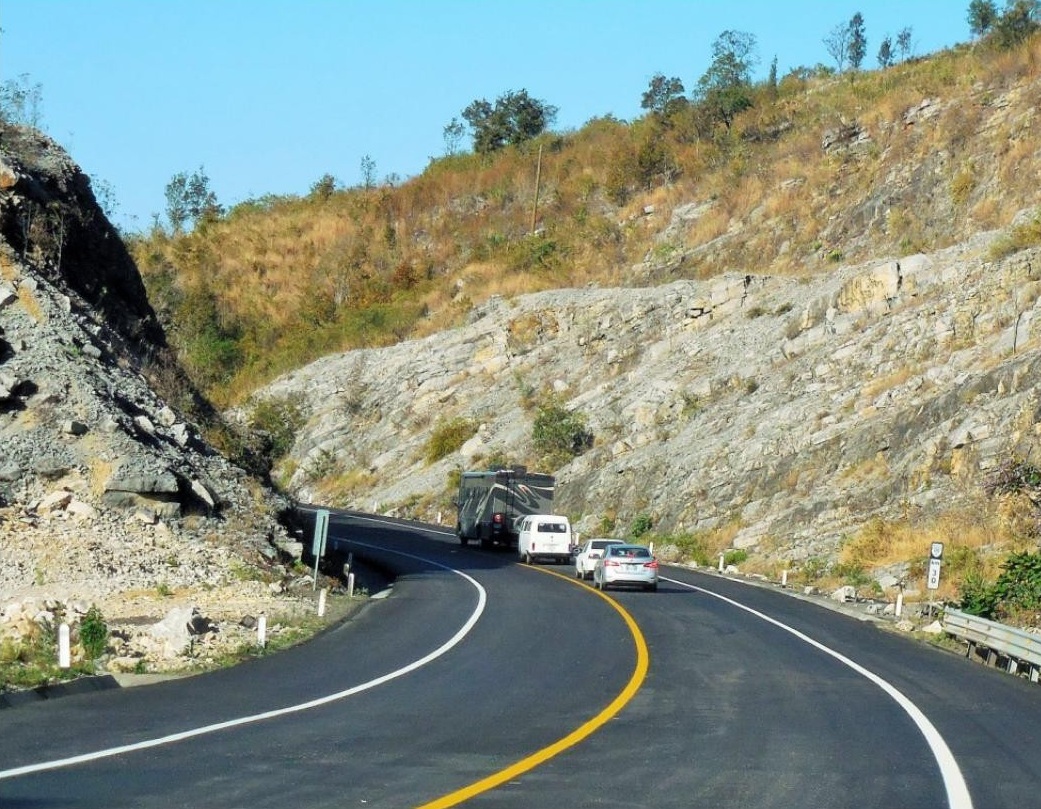
We found the campground easily enough although it did take some extra effort to raise wires along the way as we entered. The parking spaces were well spread out; however, amenities were sparse and the electrical service available was at a minimum. You could run fans, but no AC so no relief from the heat. As we said earlier, the showers were fabulous, well built, clean and great pressure with big shower heads and no hot water (not cold either), which was perfect with such extreme heat and humidity. The heat and humidity of Puerto Arista was not a sur-prise as we were only 3 hours north of the Guatemala border and 15 hours south of Acapulco.
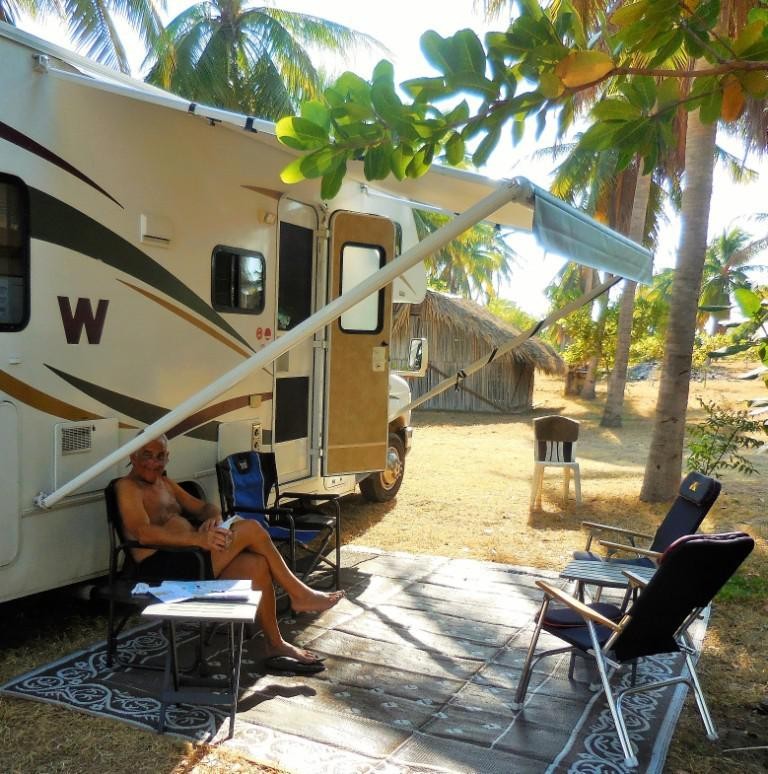
The campground was a couple of blocks from the ocean and we put in some beach time and did some boogey boarding. There was beautiful sandy beach for miles in either direction, completely deserted. We learned that Puerto Arista is home of one of the state’s four marine turtle sanctuaries (more about that later). The wind really came up throughout the day. Coconut palm tree branches were coming down everywhere in the campground, luckily not on the RVs.
We did find wifi available at the Garden Beach Hotel in the lobby where also sold cold beer to boot. The evening before our departure, Rafael had found a local family keen to host a lobster dinner at their house. We all went, just a short walk down the road in the neighbourhood. The meal was amazing, $180 pesos per plate (less than $10 USD) and was delicious.
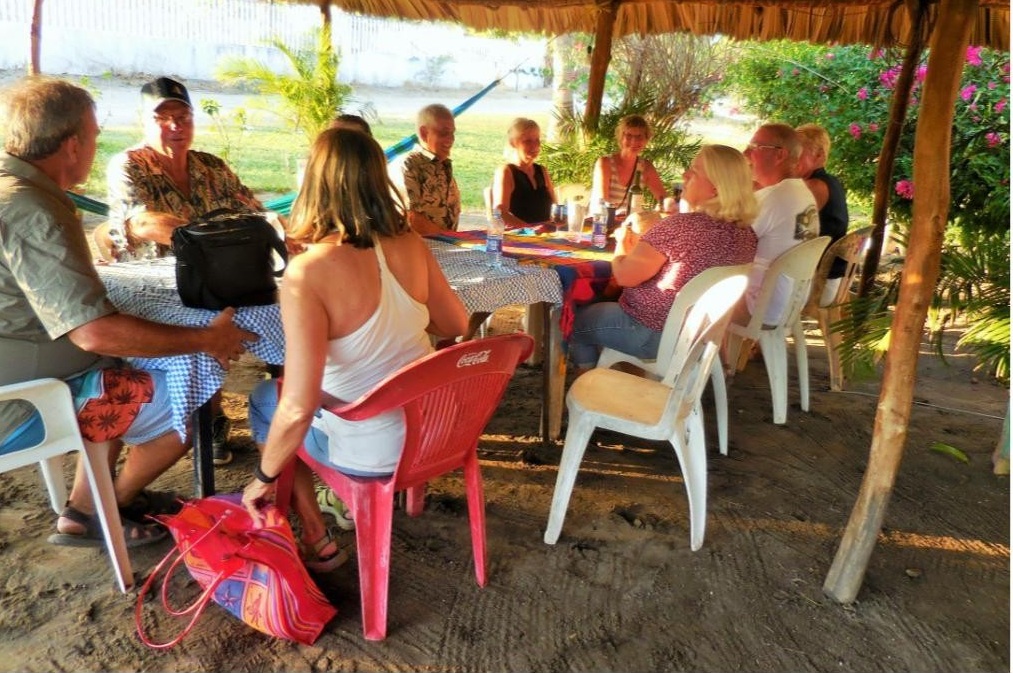
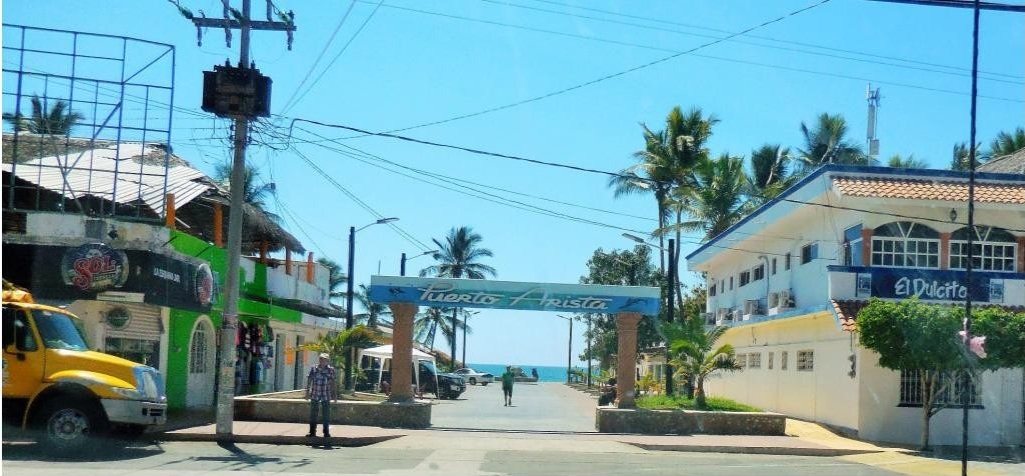
Puerto Arista is a small community and tourist attraction located on the north coast of Chiapas, Mexico in the municipality of Tonalá. While it originally was a port, its lack of harbor and suitability for large cargo ships eventually shifted the economy to tourism in the 20th century. It is popular with people from Chiapas as it is located close to the state capital of Tuxtla Gutiérrez as well as the regional city of Tonalá. It is the most visited beach in Chiapas and one of its most popular tourist destinations (during special occasions and long weekends), despite its relative lack of sophisticated tourism infrastructure. Puerto Arista is home of one of the state’s four marine turtle sanctuaries, designed to help protect the various species which come here to lay their eggs.
The area is part of the Istmo Costa region of the state, itself part of the Isthmus of Tehuantepec. This coast area is a strip of land wedged between the Sierra Madre de Chiapas mountains
and the Pacific Ocean. Wind is a regular and common feature of most weather forecasts. This region is mostly filled with small towns and ranches with extensive pasture for cattle, the main economic activity for this region. Some of the nearby commu- nities include Cabeza de Toro, which straddles the road linking Puerta Arista and Boca del Cielo, both on the La Joya Lagoon. The community of Puerto Arista itself straddles a main boulevard that runs parallel to the beach. This road has various names such as Boulevard Zapotal and Avenida Mariano Mata moros, but it is most commonly referred to as “el boulevard”.
Most of the buildings along this boulevard, especially in the center of town, are businesses that cater to tourists, such as hotels, restaurants and small stores. The other important road is the Tonalá-Puerto Arista highway, which connects to el boulevard in the center of town, at the lighthouse built in the 19th century.
Local History
Originally called La Puerta, its existence is first recorded in 1813, when the Spanish council in Cádiz authorized the port to trade with Guatemala, other ports in New Spain and Peru. In the 1860s, President Benito Juárez declared it a main port for coastal shipping. The port used to receive goods from Panama, Acapulco and as far as San Francisco. Chiapas products included limes, dried fish, indigo and tropical hardwoods. As it lacks a bay, ships arriving to the area had to dock in open ocean, linked to the coast with a very long cable, with smaller boats to ferry cargo and passengers. In 1893, the federal government constructed a lighthouse to warn large cargo carriers from the area as its waters were not considered safe for such craft. Since then, the area has lost its function as a port, with only shrimp boats stopping nearby. As we said earlier, the economy has since shifted to tourism. In 2010, a large rogue wave hit the area smashing into beachside restaurants, washing away dozens of establishments and boats. The wave also eroded more than a meter of beach width in areas. In the summer and November 2011, there were some problems with high levels of Enterococcus bacteria in the water.
Today Puerto Arista is all about Tourism
Although it is crowded mostly during Mexican vacation periods such as Holy Week and Christmas and empty most of the rest of the year, it is still the most-visited beach area in the state. It is one of the most visited sites in Chiapas after Palenque, San Cristóbal de Las Casas and Chiapa de Corzo. The area received 90,371 total visits in 2008. During the Christmas vacation period in 2009, the port received about 2,000 visitors in two days, who spent about a million pesos with hotel occupancy at about eighty percent. In summer 2011, the average hotel occupancy was 46.38% with 17,000 visitors, up from 11,000 the year be-fore.
Puerto Arista has thirty-two km of wide beaches facing open ocean. From the beach area, the peaks of the Sierra Madre de Chiapas can be seen in the background, which are often covered with clouds. The climate is hot and semi-humid with most rain falling in the summer. The average annual temperature is 27 °C. These beaches have fine, gray, volcanic sand and flocks of frigate birds visible. The surf can be heavy, but this is not common. At low tide, the surf is gentler and safer for swimming. However, the most dangerous aspect about the water is riptides, capable of sweeping people out to sea. These mostly occur beyond the second line of wave breaks. There are no indications as to the safety of the waters and no professional life-guards. In 2008, 27 of the 41 near drowning incidents in Chiapas occurred in Puerto Arista.
Tourist infrastructure mostly consists of basic hotels and simple palapa restaurants which face the ocean. There are some upscale hotels up to three star ones: Hotel Safari, Hotel Lucero, Aguamarina and Arista Bugambilias and one business offering bungalows: José’s Camping Cabañas (where we stayed!). The palapa restaurants all specialize in seafood dishes, all with very similar menus and prices. Although there are a couple dozen of these restaurants, only five or six are generally open at any given time. On the main road near the lighthouse, there are food stands selling Mexican staples. ATV rentals are popular here but there is also boat rental, sports equipment and camping. The beach was the site of an event related to the NOR-CECA Beach Volleyball Circuit in 2010.
Puerto Arista Turtle Sanctuary
Puerto Arista turtle sanctuary is a state-sponsored turtle protection and preservation program, located 2.5 km west of town next to the Villa Murano Hotel. It is located on a property with 500 hectares of mangroves and beaches. It is one of four installations in the area along with those in Boca del Cielo, Costa Azul, and Barra de Zacapulco. Puerto Arista is one of the 144 beaches in Mexico where sea turtles come to lay eggs. It is also one of twenty two beaches where these nests of eggs experience a high risk of being pillaged. In addition, marine turtles have turned up dead on these shores, generally blamed on illegal fishing, especially shrimping, with nets in prohibited areas.
There is still some illegal hunting of turtles and turtle eggs despite a federal ban. The sanctuary’s main function is to patrol the beach by foot and ATV for fresh turtle nests in order to re-locate the eggs to protected enclosures. Later, the hatchlings are released back into the sea. It allows visitors to participate in both the collection of eggs and liberation of hatchlings. Activities take place year round but most turtles come here to nest between July and November. In 2008, the governor of Chiapas visited the sanctuary to participate in the freeing of over 7,000 hatchlings for the grand opening of the Centro Integral de Conservación. In that year, about a half a million were released, with 25,000 visits. In 2010, the sanctuary was nearly abandoned with almost no personnel and deteriorated facilities. Good news; since then, is that there have been rehabilitation efforts and the situation is improving.
Download the full edition or view it online
Dan and Lisa Goy, owners of Baja Amigos RV Caravan Tours, have been making Mexico their second home for more than 30 years and love to introduce Mexico to newcomers.



